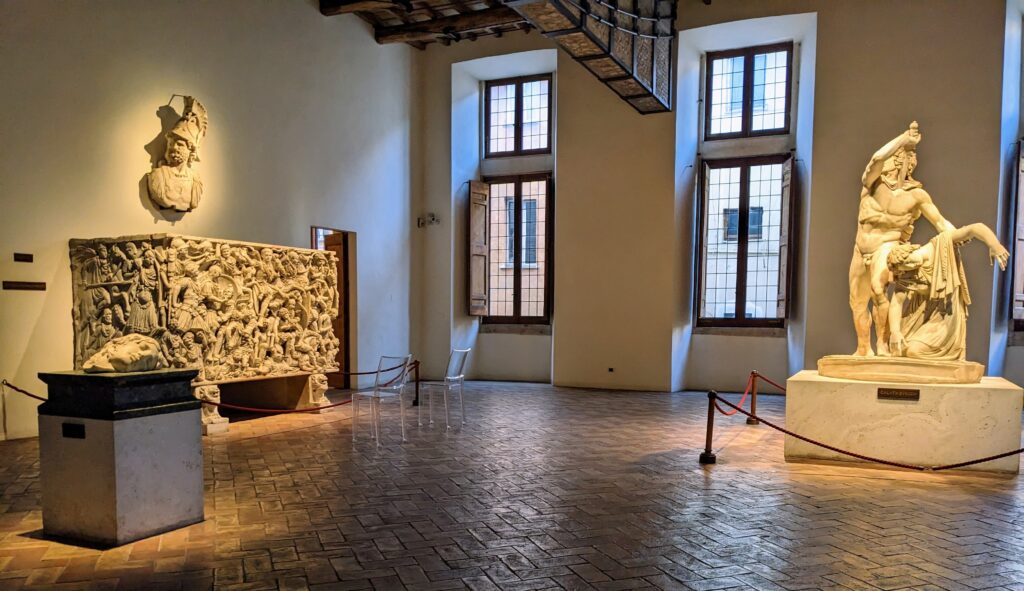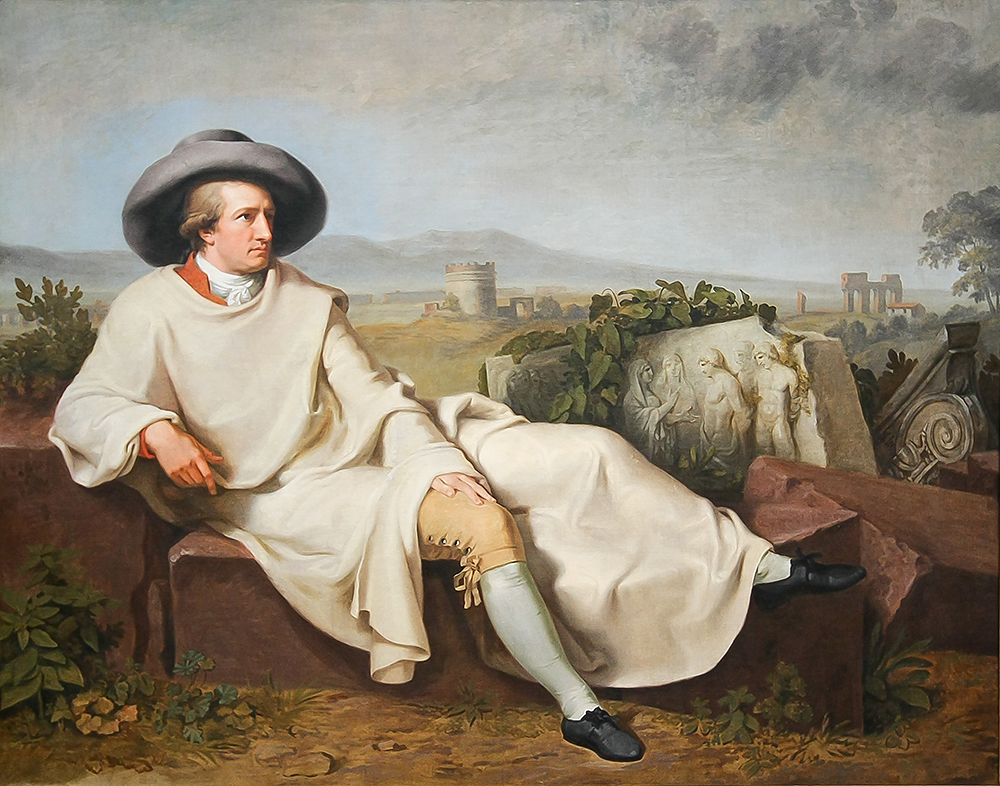
For centuries, a journey through Italy was thought of as a natural complement to a liberal education. Revisiting the ancient, medieval, and renaissance art and architecture offered young people a sense of the depth and the grandeur of the past that was being eclipsed by the more fair-minded, but smaller world of egalitarian modernity. Both its ruins and its life made Italy a privileged vantage point from which to contemplate the virtues and the vices of the modern world. Modern thinkers of no less stature than Goethe, Shelley, Keats, Byron, Stendhal, Burckhardt, Wagner, George Eliot, Henry James, Nietzsche, Mann, Joyce, Pound, and T.S. Eliot all found study in Italy congenial to their spirits and essential to their work.
Why RILA
Exploring Fundamental Questions through Great Books and Excursions in Rome
Italy and its past have a profound effect on those who encounter it. The men of the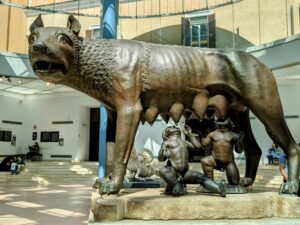 Italian Renaissance who unearthed the beauties of antiquity were changed in body and soul. And in the wake of the enlightenment, a journey to Rome meant not simply the indulgence of idle curiosity, but rather a transformation of the character of a lady or a gentleman. While making them citizens of the world, at the same time it broadened their horizons beyond the conventions of the present day. Today, with the rise of the global economy and unending technological progress, the West feels more than ever the need to reflect on, and to preserve its humanity as part of its modernity.
Italian Renaissance who unearthed the beauties of antiquity were changed in body and soul. And in the wake of the enlightenment, a journey to Rome meant not simply the indulgence of idle curiosity, but rather a transformation of the character of a lady or a gentleman. While making them citizens of the world, at the same time it broadened their horizons beyond the conventions of the present day. Today, with the rise of the global economy and unending technological progress, the West feels more than ever the need to reflect on, and to preserve its humanity as part of its modernity. 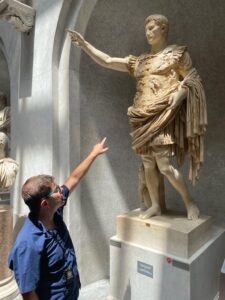 Italy offers a unique prospect for this reflection: no other country offers a cultural memory, an artistic legacy, and a physical record that reflects the apex of classical culture, both Greek and Roman, as well as the very peaks of medieval, and renaissance civilization, all embedded in a nation that has remained vital and central to the unfolding of turbulent modern European life. Hence a variety of human types worthy of determined reflection are especially accessible in Italy, where questions about human aspirations are there as if on the surface of the monuments and art works, waiting to be examined by students already engaging these questions through their reading of classic texts of philosophy, literature, and history.
Italy offers a unique prospect for this reflection: no other country offers a cultural memory, an artistic legacy, and a physical record that reflects the apex of classical culture, both Greek and Roman, as well as the very peaks of medieval, and renaissance civilization, all embedded in a nation that has remained vital and central to the unfolding of turbulent modern European life. Hence a variety of human types worthy of determined reflection are especially accessible in Italy, where questions about human aspirations are there as if on the surface of the monuments and art works, waiting to be examined by students already engaging these questions through their reading of classic texts of philosophy, literature, and history.
Good core text programs in the U.S. that might enrich their students’ education with the art and architecture of Italy find themselves wholly unprepared to do so. Although such programs study extensively, e.g., ancient and renaissance thought, actual contact with the ancient and renaissance objects is sometimes viewed as a mere distraction from ideas and books. This is understandable given that these objects are often studied as part of specialized research or are treated as light tourist fare. However, what is clearly called for is a serious engagement with great thinkers that in turn brings to life the artistic and historical objects of contemplation available in Italy. These objects can transform the way one reads while the reading adds significance to the objects.
The creation of the Rome Institute of Liberal Arts – RILA – was intended to provide this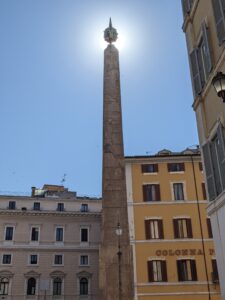 possibility, making the history and art of Italy an integral part of a deep engagement with classic texts. Our inaugural course, for example, was designed so as to approach the relationship between the beautiful and the sacred from a variety of angles. Plato’s Symposium is set alongside the proportions of classical art and architecture, Dante’s Divine Comedy juxtaposed with medieval mosaics and cathedrals or Raphael and Michelangelo’s allegories in the Vatican, while Hegel’s writings on aesthetics and the history of art are read alongside classical sculpture and the works of Caravaggio and Borromini. and the works of Caravaggio and Borromini. Although RILA students learn a lot about Italy, RILA’s mission is not to teach Italian culture per se. Instead we explore questions that can be framed through a visit to Italy and Italian sources. Hence although our courses may often involve Italian authors, our courses involve any authors or artists who make study in Italy an especially profitable and intellectually serious experience. All texts are read in translation.
possibility, making the history and art of Italy an integral part of a deep engagement with classic texts. Our inaugural course, for example, was designed so as to approach the relationship between the beautiful and the sacred from a variety of angles. Plato’s Symposium is set alongside the proportions of classical art and architecture, Dante’s Divine Comedy juxtaposed with medieval mosaics and cathedrals or Raphael and Michelangelo’s allegories in the Vatican, while Hegel’s writings on aesthetics and the history of art are read alongside classical sculpture and the works of Caravaggio and Borromini. and the works of Caravaggio and Borromini. Although RILA students learn a lot about Italy, RILA’s mission is not to teach Italian culture per se. Instead we explore questions that can be framed through a visit to Italy and Italian sources. Hence although our courses may often involve Italian authors, our courses involve any authors or artists who make study in Italy an especially profitable and intellectually serious experience. All texts are read in translation.
RILA mixes different approaches: classroom discussions, guest lectures, and frequent excursions. We aim to enable students to experience the city and its wonders, but without their becoming passive tourists. Excursions are intended as a part of a serious reflection on the themes of the classroom discussions. Instead of trying to rush students from one site to another while stuffing them with irrelevant historical information, we hope to focus their attention on the ideas. Classes demand that the students participate and take responsibility for their own learning.
top of page
